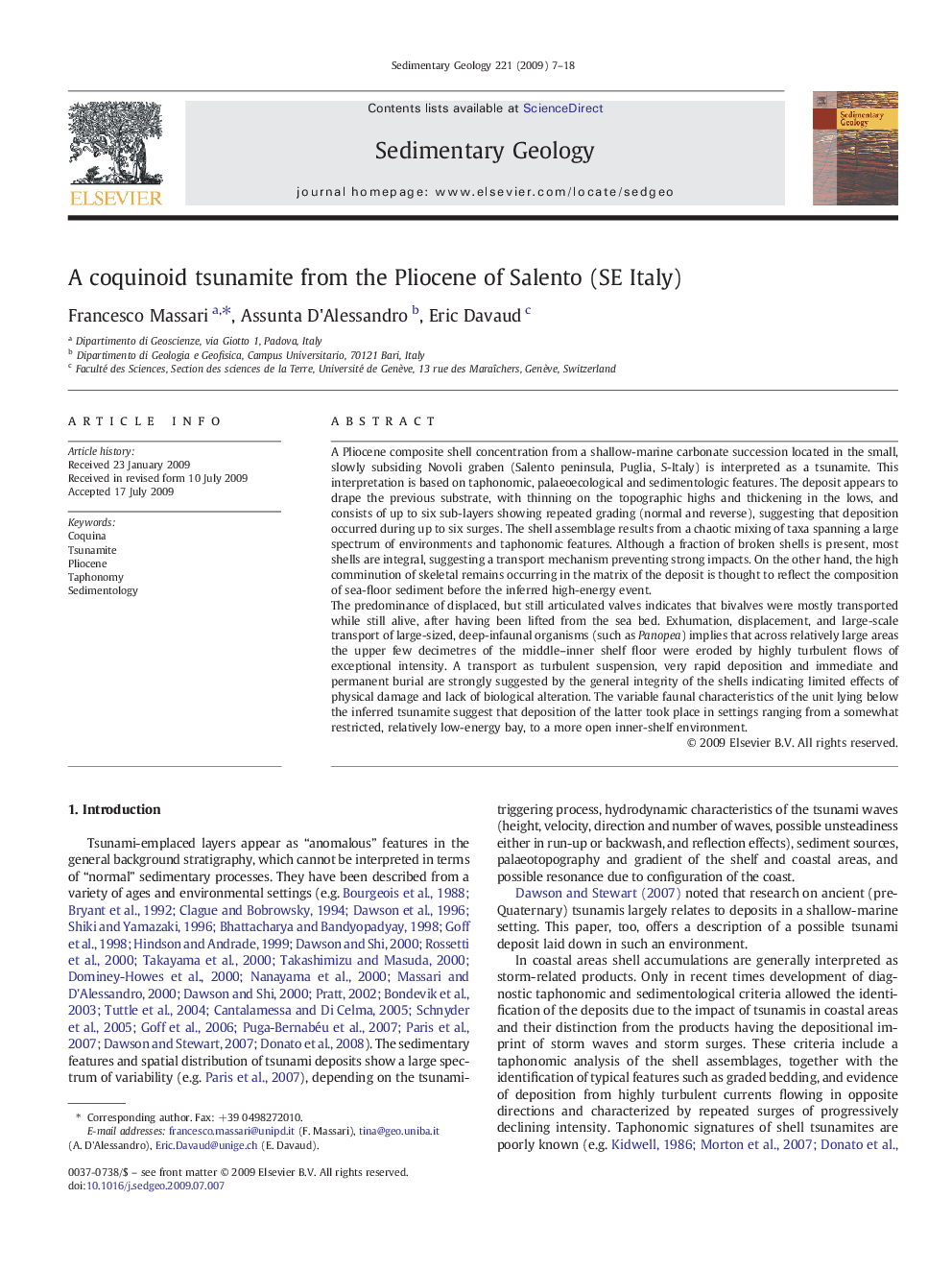| کد مقاله | کد نشریه | سال انتشار | مقاله انگلیسی | نسخه تمام متن |
|---|---|---|---|---|
| 4690357 | 1636134 | 2009 | 12 صفحه PDF | دانلود رایگان |

A Pliocene composite shell concentration from a shallow-marine carbonate succession located in the small, slowly subsiding Novoli graben (Salento peninsula, Puglia, S-Italy) is interpreted as a tsunamite. This interpretation is based on taphonomic, palaeoecological and sedimentologic features. The deposit appears to drape the previous substrate, with thinning on the topographic highs and thickening in the lows, and consists of up to six sub-layers showing repeated grading (normal and reverse), suggesting that deposition occurred during up to six surges. The shell assemblage results from a chaotic mixing of taxa spanning a large spectrum of environments and taphonomic features. Although a fraction of broken shells is present, most shells are integral, suggesting a transport mechanism preventing strong impacts. On the other hand, the high comminution of skeletal remains occurring in the matrix of the deposit is thought to reflect the composition of sea-floor sediment before the inferred high-energy event.The predominance of displaced, but still articulated valves indicates that bivalves were mostly transported while still alive, after having been lifted from the sea bed. Exhumation, displacement, and large-scale transport of large-sized, deep-infaunal organisms (such as Panopea) implies that across relatively large areas the upper few decimetres of the middle–inner shelf floor were eroded by highly turbulent flows of exceptional intensity. A transport as turbulent suspension, very rapid deposition and immediate and permanent burial are strongly suggested by the general integrity of the shells indicating limited effects of physical damage and lack of biological alteration. The variable faunal characteristics of the unit lying below the inferred tsunamite suggest that deposition of the latter took place in settings ranging from a somewhat restricted, relatively low-energy bay, to a more open inner-shelf environment.
Journal: Sedimentary Geology - Volume 221, Issues 1–4, 15 November 2009, Pages 7–18